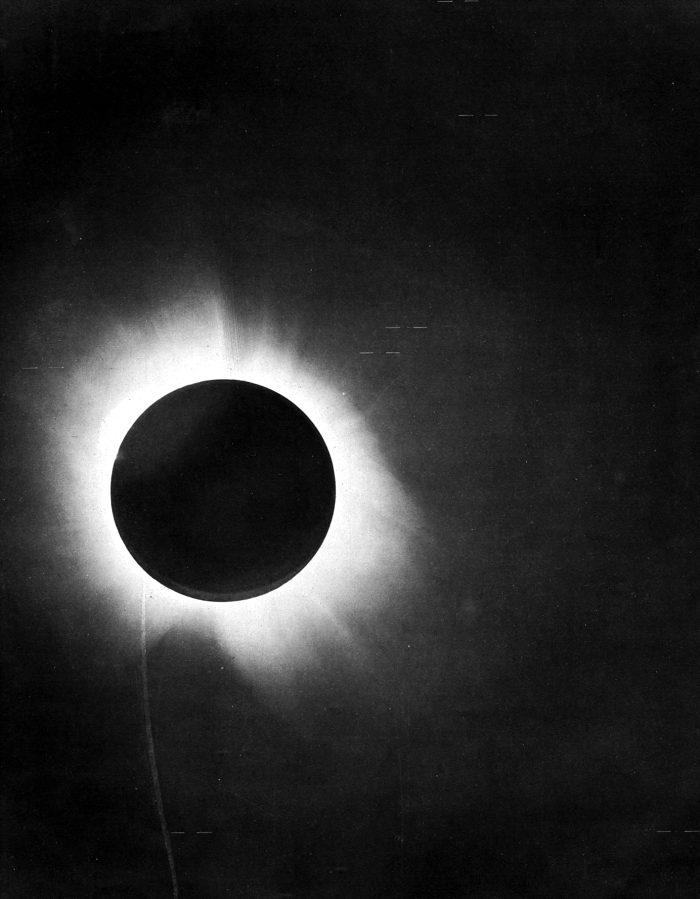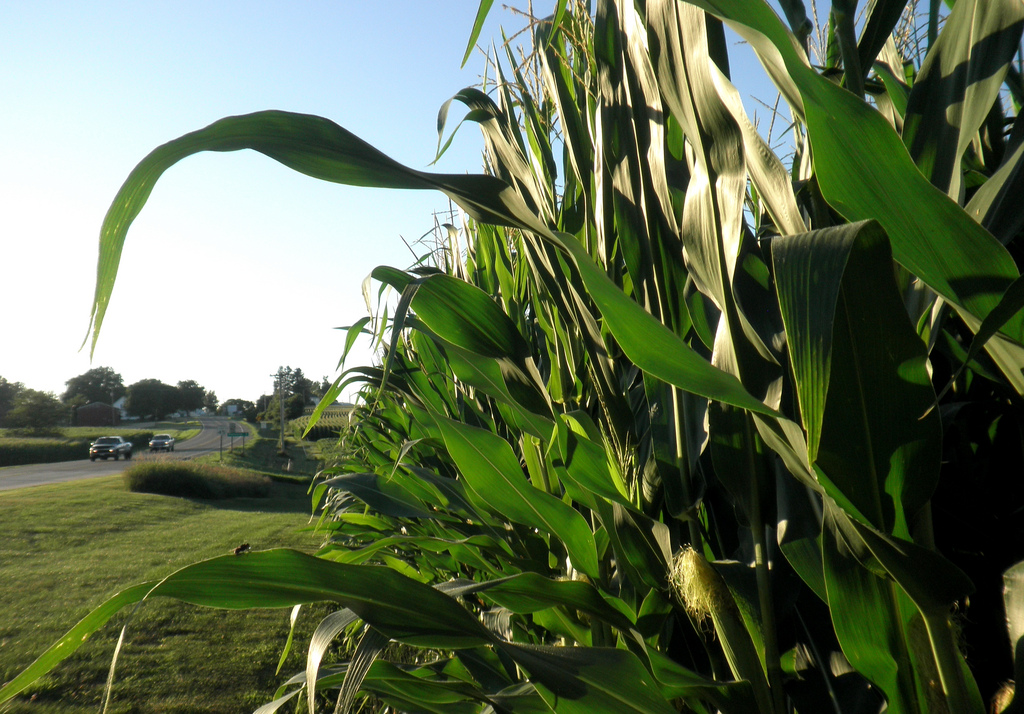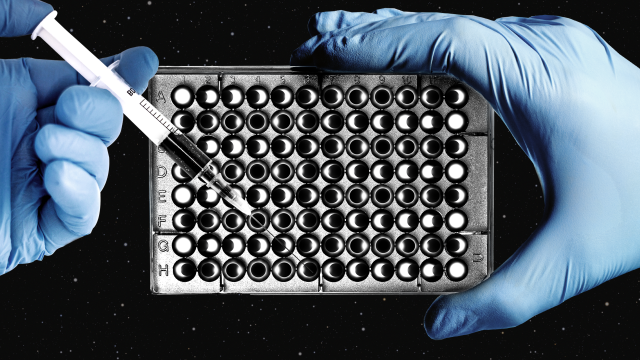Solar eclipses are certainly one of the most striking astrophysical phenomena. The most important light of the day, the Sun, gets blacked out by the most important light of the night. But there’s actually nothing weird or surprising about that — sure, eclipses are rare, but with the Moon close and the Sun far away, sometimes one gets in the way of the other. But who cares? How is that different than a plane flying over your house?
Photo Illustration by Elena Scotti/Gizmodo/GMG, photos via Shuttershock
The answer is that eclipses really do have uses, beyond just inspiring us with wonder. Some of those uses are obvious, some are surprising, and some have nothing to do with space. But when the eclipse rolls around in the US on August 21, scientists will be doing real experiments, some of which the average eclipse-viewer can participate in as well. And past eclipses have been responsible for some of the most important discoveries in modern physics.
“During the time people experience darkness, there will be a whole lot of science going on, not just basic science,” Angela Speck, Director of Astronomy at the University of Missouri, told Gizmodo. “I really want people to take away that they just got to be a part of a big science experiment.”
Einstein’s Theory of General Relativity

By now, you’ve almost certainly heard about one of the solar eclipse’s most famous uses: The 1919 eclipse that Arthur Eddington used to prove Albert Einstein’s theory of general relativity. Essentially, Einstein’s 1915 theory says that massive objects should warp the shape of space itself by a noticeable amount. Something like the Sun should bend the light from the constellations behind it, making the stars look as if they have moved over a teeny bit.
But how can you look at the stars with a 5500C burning ball in the way?
That’s why Eddington needed to wait for an eclipse, using the blacked-out Sun as a giant gravitational lens. His chance came with the 1919 solar eclipse shadow that passed over Africa. When he returned from his expedition, he had proof that Einstein’s wild theory was true.
This month’s eclipse will act as another test of the theory. “Just to the southwest, in the Sun’s corona, will be Arcturus,” Scott McIntosh, director of the National Center for Atmospheric Research’s High Altitude Observatory in Colorado and Hawaii. “It will act as a beautiful calibration source for those who want to redo Eddington’s experiment.”
The discovery of Helium
Today we know that helium is the second element on the periodic table and the second most abundant element in the universe, but it wasn’t as easy to detect an invisible gas in the 19th century. It took a solar eclipse to discover helium.
“Element number two, that’s not bad!” astronomer Jay Pasachoff from Williams College told Gizmodo.
Actually discovering the element meant observing the Sun’s corona for spectral lines. Specific atoms with added energy release light of only very specific colours, or wavelengths, that scientists observe with spectroscopes. So, a team of scientists headed to India, and on 18 August 1868, observed the telltale yellow spectral line, which “seemed to indicate a new substance“.
Scientists have since confirmed that discovery and refined their observations. But the element and solar eclipses will forever share a bond: Its name comes from the Greek “Helios“, the Titan God of the Sun.
Understanding the Sun’s Corona
Many of our solar concerns revolve around the corona, the bright, high-energy plasma blasting off the Sun’s surface — after all, that’s where space weather comes from. High energy particles blasting off the corona can cause wild auroras, harm satellites, or potentially even swap votes in voting machines should they hit electronics in the right place.
Studying this outer layer requires a special telescope that perfectly blocks out the Sun with an opaque piece of material, leaving only the corona visible. Past solar eclipses have treated the Moon like the opaque disk, turning any camera into a coronagraph for a few minutes, as Pasachoff explained in Nature Astronomy. Through history, this has let scientists determine the corona’s temperature (which can reach millions of degrees) and glean further information about the solar cycle, the regular increase and decrease in solar activity.

Image of the solar corona captured during an eclipse on January 4th, 2010.Image: NASA Goddard Spaceflight Center/Flickr Creative Commons
Scientists will continue observing the corona during this eclipse, both from the ground and from balloons. Surprisingly, certain observations of the solar corona still require eclipses in order to properly image. “Eclipse observations remain the only way to get white-light observations of the important regions of the lower and middle corona, in which the solar wind forms,” writes Pasachoff.
Combating the time squeeze are citizen science projects, such as the Megamovie and Citizen CATE, that average citizens can take part in. The Megamovie, organised by Google and University of California, Berkeley, hopes to combine high definition films of the eclipse from across the US. Citizen CATE, organised by the National Solar Observatory, hopes to image the normally difficult-to-capture parts of the corona by combining a lot of citizen scientists’ telescope data.
Plant and Animal Behaviour
You’re fairly lucky to be a human during the eclipse: At least you know it’s coming. But plants and animals behave differently at night. The unexpected darkness in a natural habitat can make the eclipse an interesting biological tool. “I’m really curious to see how plants, animals and insects respond,” Timothy Reinbott, Assistant Director of the Agriculture Experiment Station at the University of Missouri College of Agriculture told Gizmodo. Is the eclipse long enough, he wonders, to elicit a response?

Image: Phoebe Baker / Flickr Creative Commons
Reinbott will be filming the sensitive Mimosa pudica plant, as well as corn, soybeans and others. There’s a drought around St Louis, and corn plants curl up their leaves to help conserve water. But he thought that perhaps the sudden darkness might cause them to open up, or that other effects might be visible in plants sensitive to light in other ways. And maybe birds will start singing, or animals will start getting ready to sleep.
Woods is crossing his fingers that he gets to see something new.
“I’m most excited about seeing these plant responses,” he said. Ultimately, he hopes to determine which dominates a plant’s behaviour: The sunlight or its own internal clock.
The Weather
Solar energy is the main driver of the Earth’s weather… so what if the Sun suddenly disappears? Jeffrey Woods’ team from the University of Missouri School of Natural Resources plans to survey the atmosphere and temperatures, as well as the wind patterns, and how they change during the eclipse.
“If it’s a clear day,” he said, other studies have shown “up to 7-8 degree Fahrenheit [3.9-4.4C] temperatures changes.”
The eclipse will be passing over several different ecosystems, including forests, farmland and prairies. Woods’ team has four towers set up around St Louis to measure the atmospheric response, as well as weather balloons. He hopes to measure the rate at which things heat and cool. Here, too, citizen scientists are getting involved, and he said many in the St Louis area have received button thermometers to measure the eclipse’s effects on their own home.
So, if you’re a nihilist who doesn’t get why some Moon blocking the light from some star on some lonely planet is so exciting, rest assured: There actually is some grander scientific knowledge us humans hope to gather.
